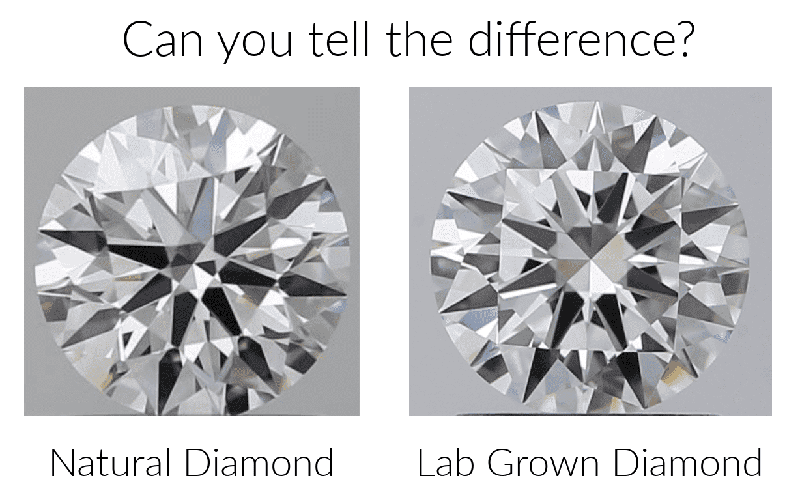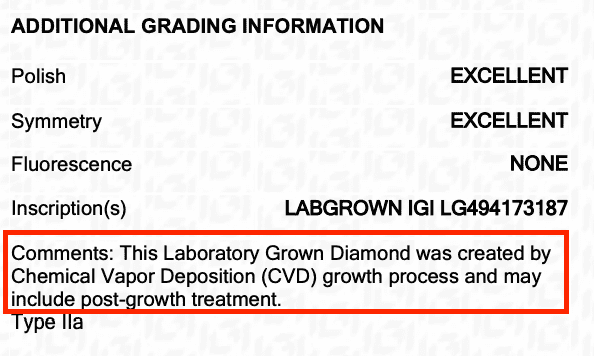Lab-Grown Diamonds the Perfect Blend of Affordability and Sustainability
Everybody knows that diamonds cost a pretty penny, but what if they don’t have to? The lab grown diamond market is a huge success for this precise reason. Everyone can appreciate a diamond for what it is, from its remarkable formation process to its renowned hardness and breathtaking beauty. There are so many traits that make a diamond a diamond. Unfortunately, all of these features add up to numbers that are hard for the average person to justify. This is where synthetic diamonds come into play. Are lab-created diamonds worth anything? By choosing a lab grown diamond for your engagement ring that was made by humans instead of mother nature, you only pay a fraction of the cost.
What is a Lab Grown Diamond?
Just to clear the air, lab made diamonds aren't “fake” diamonds. They are just as real as mined diamonds. “How can they both be real diamonds when one was made by humans?” Simple, both lab grown and earth grown diamonds are the same exact substance, the difference being how they were created. When cut, they look the same, feel the same, and are the same. Even though the normal person can’t pick these diamonds apart, gemologists have internal inclusions they can rely upon to find out the diamond’s identity. In the jewelry industry, it is bad practice to not label your diamonds as synthetic, lab grown, or man made. By failing to do so, you will lose your respect and standing in the industry. Therefore, retailers will always label their diamonds for what they are. Not to mention, it is illegal to not disclose your diamonds.
There are two methods of creation that are widespread in the diamond industry. HPHT (high pressure high temperature) and CVD ( chemical vapor deposition).

HPHT (High Pressure High Temperature)
The HPHT process is the closest to how diamonds are formed in nature. Carbon is heated and compressed in an extremely resilient chamber to form a diamond crystal. In 1954, the same company that made your kitchen fridge successfully created the first man made diamond. It was none other than General Electric. These diamonds weren't pretty though, they were created for industrial uses. The most common use for these industrial diamonds were for lasers and abrasives. The 1970s is when General Electric popped out the first gem quality HPHT diamond.
HPHT Treated Diamonds
HPHT can also refer to a diamond, natural or synthetic, that has undergone treatment. A diamond might be treated in this manner to improve clarity or color. While diamonds can be treated to become colorless or near colorless, color causing trace elements such as nitrogen and boron can be used to create yellow and blue diamonds. Or in the instance of pink diamonds, a diamond is subjected to precise conditions to create the unique crystal structure that turns diamonds pink in nature. In a way, HPHT treatment is like recycling, you start off with a poor quality diamond and give it another chance by making it into something beautiful that's in high demand. Diamonds that have been through this process will have post growth treatment listed under the comments section on the grading report. Keep in mind, this is a stable treatment and is considered just another step in the CVD growing process (only CVD lab made diamonds undergo this type of treatment).

CVD (Chemical Vapor Deposition)
CVD diamonds first hit the market in the 2000s. The jewelry industry was excited about these new additions for many reasons. The color of diamonds created by the CVD process was on average closer to a colorless grade than its predecessor, the HPHT diamonds. CVD diamonds are also more cost efficient than HPHT, which uses large amounts of energy and heavy duty machinery in comparison to CVD’s moderate electrical usage and less demanding equipment. The only downside to these new lab grown gems was their consistency. Although the CVD diamonds had potential to produce diamonds with high quality color, in the beginning, the results were all over the place. Since its start, the CVD process has been refined and manufacturers have better control over the results. The creation of a CVD lab grown diamond starts with a carbon, methane, and hydrogen gas mixture that’s introduced into a vacuum chamber, where it is heated to a moderate temperature and deposited onto a small diamond called a diamond seed crystal. Diamond seed crystals are small synthetic diamonds that give the new diamond growth a crystal pattern to follow.
Price Point
When buying lab made diamonds, you don't need to decide between the two processes. At the end of the day, they both create stunning synthetic stones and it's kind of pointless to buy on creation method alone, since the different processes don't do anything for value. Although, there is a huge price difference when comparing man made to natural. About four times the price, in fact! I used Rare Carat’s search feature to help give an example of price differences for identical natural vs synthetic diamonds. I set all search settings to the same, with the only difference being how they were created. My search results showed that a lab grown diamond of 1ct. costs $1,336 while its natural counterpart goes for $4,673. For another example, a 2 ct lab grown is priced at $4,590 while prices for a natural of the same carat weight reach up to $20,000 and higher!
Why Choose Synthetic Diamonds?
I have four reasons for encouraging people to explore the possibility of lab made diamonds: price, conflict free, sustainability and eco friendly.
Price
My first bullet point is possibly my most obvious. Like I mentioned earlier, synthetic diamonds are much more cost effective since your money goes much further compared to natural diamond prices.

Conflict Free
One of the huge issues with traditional diamond buying is making sure your diamonds are conflict free. In the past, people have sold diamonds to help fund wars and destruction. Today, we have regulations that prevent the money gained from diamond sales to be used for hate. By buying synthetic diamonds, you completely take away the ever so slight chance of buying a conflict diamond.
Sustainability
My third biggest reason is sustainability. Diamonds are formed deep in the earth and are brought to the surface by volcanic eruptions. These eruptions happen next to never, and on top of that, only a select few bring us diamonds. This means there is a finite amount of natural diamonds on the surface. So until someone invents lava proof diving suits to travel to the center of the Earth, we will need a backup plan for when we run out of natural diamonds. Good thing we already have one!
Eco Friendly
The biggest dilemma for modern companies is how to be more responsible. While these processes use lots of electricity, they don’t affect the environment like a diamond mine does. Diamond mines are massive and are notorious for damaging local ecosystems. Although this is the norm, it's not how everyone operates. There are some mines that take the environment into consideration and do their best to respect the land. By buying synthetic you are helping reduce our impact on the earth.
I hope you are as sold on man made diamonds as I am. In my mind, there are so many reasons to buy synthetic diamonds, it's dangerous to my wallet! To shop for your first lab grown diamond, visit rarecarat.com and use their convenient search features to find your perfect pick.

